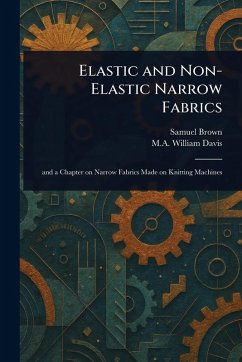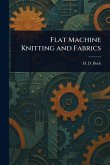Explore the intricacies of textile manufacturing with "Elastic and Non-Elastic Narrow Fabrics," a detailed examination of both elastic and non-elastic fabrics. Authored by Samuel Brown and William Davis, this book delves into the technical aspects of creating narrow fabrics, essential components in various industries. This comprehensive guide offers insights into the rubber industry's role in elastic fabric production, alongside detailed explanations of non-elastic fabric creation. It is suitable for those interested in the history of manufacturing and industrial processes. This volume includes a dedicated chapter on narrow fabrics produced using knitting machines, showcasing the breadth of techniques employed in the field. A valuable resource for anyone interested in the history of textile production, industrial engineering, or the manufacturing sector. Republished in print for accessibility and preservation, this book remains a useful resource for understanding the foundations of textile technology. This work has been selected by scholars as being culturally important, and is part of the knowledge base of civilization as we know it. This work is in the public domain in the United States of America, and possibly other nations. Within the United States, you may freely copy and distribute this work, as no entity (individual or corporate) has a copyright on the body of the work. Scholars believe, and we concur, that this work is important enough to be preserved, reproduced, and made generally available to the public. We appreciate your support of the preservation process, and thank you for being an important part of keeping this knowledge alive and relevant.
Bitte wählen Sie Ihr Anliegen aus.
Rechnungen
Retourenschein anfordern
Bestellstatus
Storno









